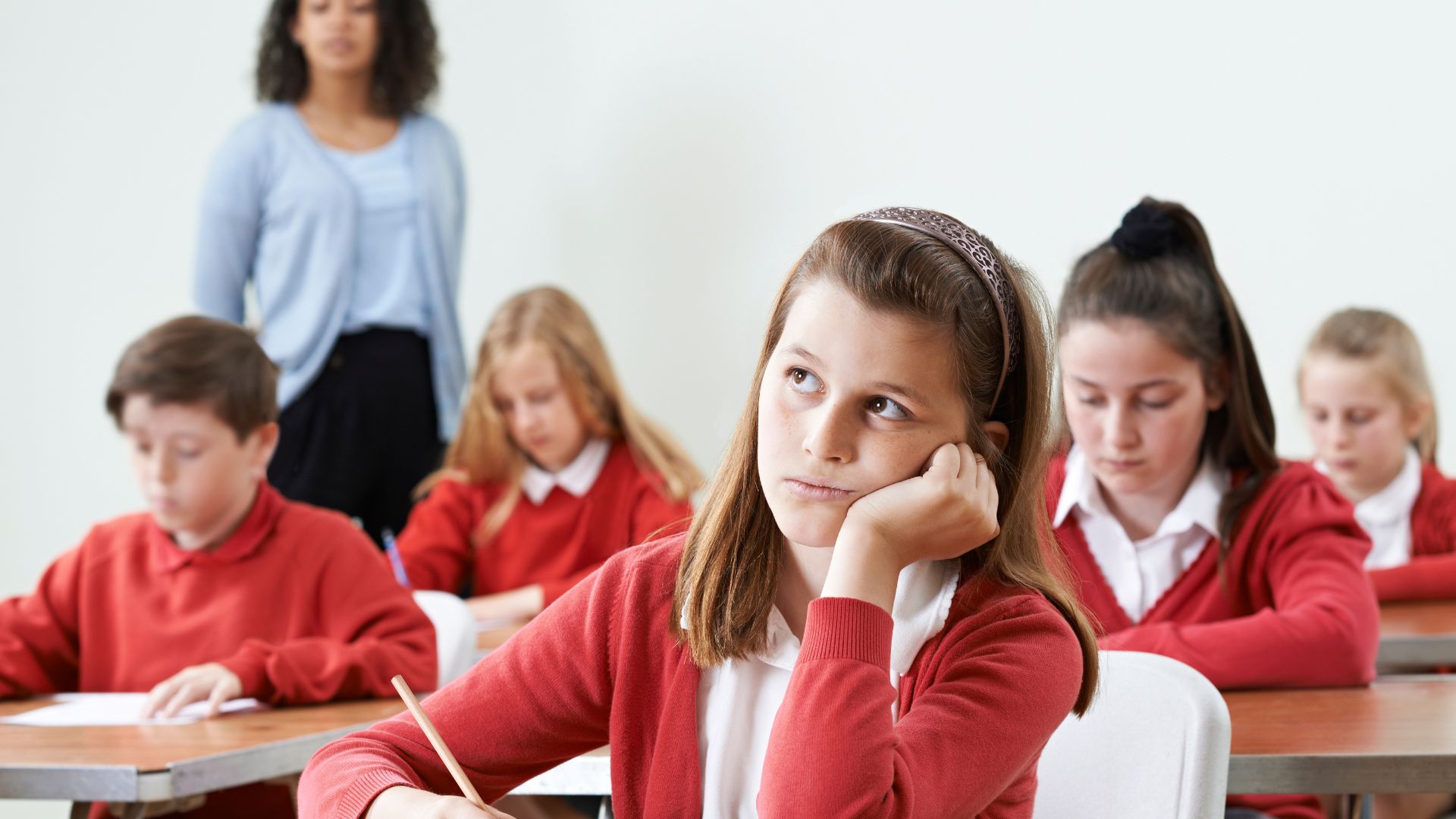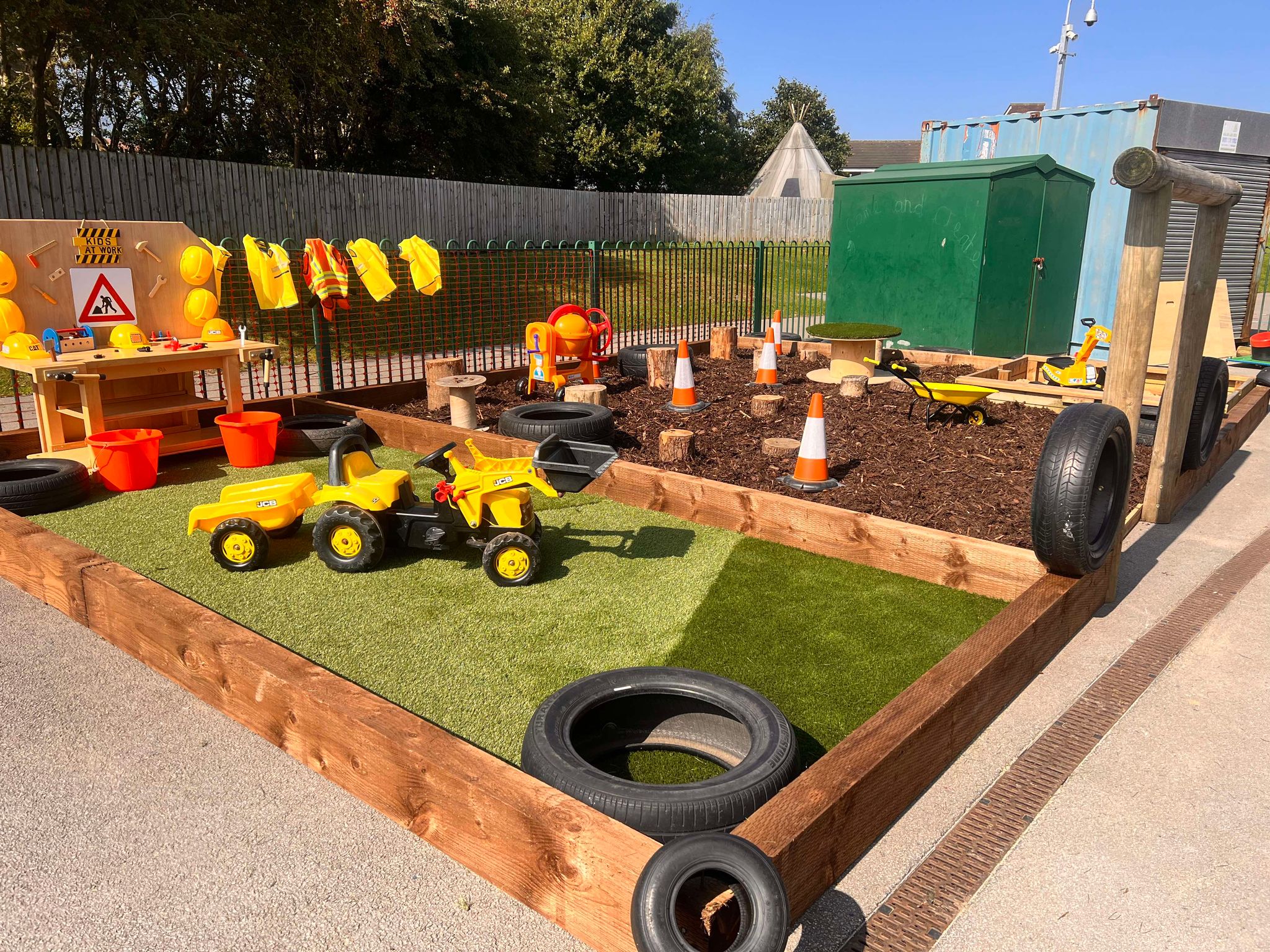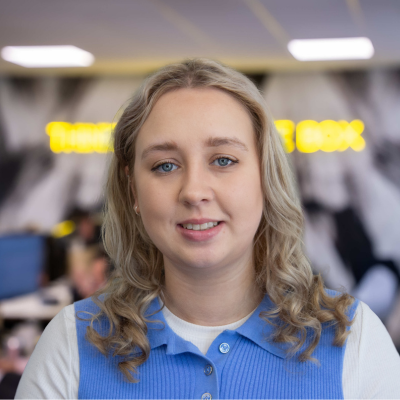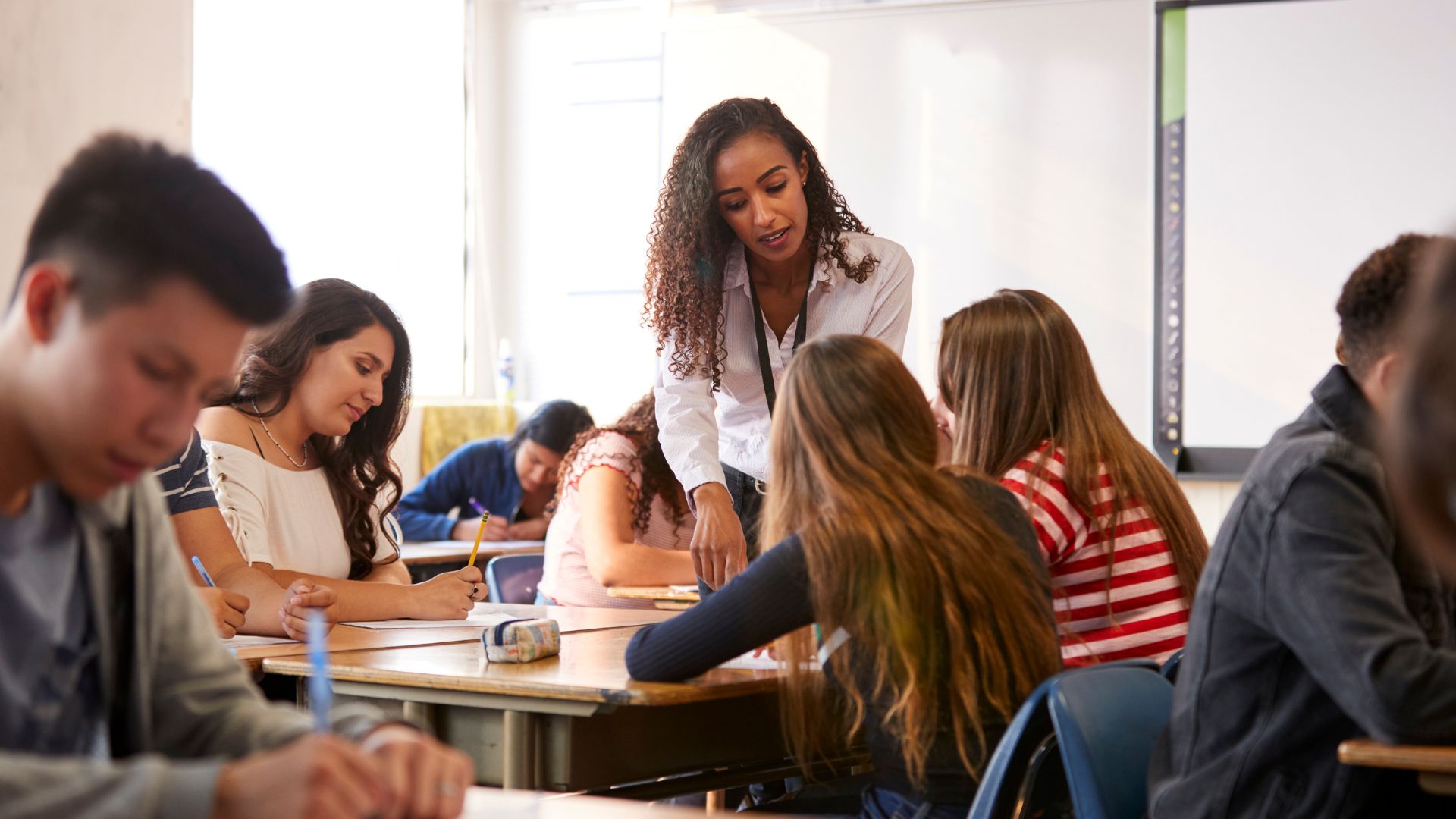
How We Built Mereside Primary Academy's New Playground
03 Oct, 20241-2 minutes
In this blog, you will learn:
- How we built Mereside Primary Academy’s new playground.
- What steps we took to make the most out of the budget and ensure sustainability when building a playground.
- Discover more about our education recruitment services.
During the summer holidays, Spencer Clarke Group built Mereside Primary Academy a brand new playground to encourage construction play and play-led learning. Our aim is to create better lives for children, starting with Mereside Primary Academy.
Building a playground isn’t easy and it can be difficult to know where to start and how to build safely and efficiently on a budget. In this practical guide we reveal how we built the playground over 5 days with a small team made up of Spencer Clarke Group employees and two professional contractors.
Things to consider when building a school playground
Seven things we had to consider when building the school playground was:
- Assess the space.
- Bring in contractors.
- Adopt the Curiosity Approach.
- Seek school approval.
- Procure tools, materials and other items.
- Build the playground.
Assess the space
The first step was assessing the space and determining what could be achieved with the allocated budget. It was important when designing the playground to take into consideration budget, sustainability and how to make use of the space available.
A great playground has to be colourful, bright and fun with lots of potential for fun and exploring. To utilise the space, we decided to split the playground into 5 zones including an outdoor library, an arts & crafts wall, a construction zone, a music wall, and a curiosity shed.
The different zones combine outdoor play with traditional classroom subjects to provide multiple opportunities for learning and development. These zones provide children with different designated areas to enjoy activities such as reading, building sandcastles or playing with toys.
To make the most of our budget and the available space, we also looked at existing things within the playground which could be upcycled and restored back to their former glory. Creating a design plan with items and equipment in mind helped us to scale the space available and create a diverse, engaging and new-feeling playground.
Not only is it important for the environment and sustainability to recycle materials and repurpose items, but it is also much more cost effective.
Bring in contractors
The second step was bringing in PGA Contractors to quote us for the bigger jobs required to transform the playground into a weatherproof and safe space. Doing this allowed us to work out how we could efficiently use the space while considering all costs and who could help with what work.
We also knew that there were certain elements to the playground that required building and construction that can only be achieved by professional tradesmen.
Adopt the Curiosity Approach
When it came to designing the playground we wanted to champion child-led play and encourage curiosity as much as possible. That is why we thoughtfully crafted the design to follow the principles of the Curiosity Approach, a practice under the Early Year Foundation Stage (EYFS) statutory framework.
The Curiosity Approach prioritises curiosity, creativity and holistic development and with the outdoor playground, children can embrace nature and the outdoors. There are lots of benefits to construction play and adopting it into the design of the playground is crucial to ensure that there are plenty of opportunities for early year children to develop their learning and use their imagination.
By including sensory objects in the curiosity shed and providing opportunities for loose play - such as musical instruments, art supplies, and a sandpit - the playground provides a rich sensory experience for early years.
Ensure sustainability
In every step of our design and preparation, sustainability was at the forefront of our minds. A significant aspect of the Curiosity Approach framework and building the playground was to encourage sustainability and consider the environmental impact.
We made a conscious effort to recycle items where possible, upcycle wooden crates, and find pre-loved toys and books.
Sustainable playgrounds are more important than ever to ensure that children and future generations are aware of their environmental impact on the planet. With their newly built sustainable playground, children can learn firsthand about recycling, renewable sources and the importance of being eco-friendly.
Seek school approval
A significant step when building the playground was to seek the necessary approval from the school to ensure that they were happy with our vision for the playground. We showed our designs to Teachers at the school to ensure that they approved of our plans and asked for any suggestions or recommendations.
We also wanted the input of the Early Year Teachers at Mereside Primary School, and asked them to provide us with a list of items they wanted to see or play with in the curiosity shed. We made sure to find the items they wanted including a vintage typewriter, an abacus, russian dolls and a dream catcher.
Procure tools, materials and other items
We procured as many materials as we could from the local builders merchants and B&Q which is only a few minutes drive from the school.
Charity shops, Vinted and Facebook Marketplace are great places to find affordable second-hand items in need of a new home. They are also full of unusual and rare items as well as books and toys that can be used to fill a Curiosity Shed or music wall.
We asked employees at Spencer Clarke Group to donate books, puzzles and soft toys to go inside the Little Dreamers Library and CDs for the music wall.
Build the playground
When it came to actually building the playground, there were many steps we had to take to ensure it looked fresh, fun and engaging! Firstly we sanded and painted 3 sheds to create a Curiosity Shed, the Little Dreamer's Library and a shed for storage.
After we had sanded and painted the Curiosity Shed, we filled it with sensory toys and unusual items which the teachers suggested.
We also filled the shelves in the Little Dreamer’s Library with books, soft toys, wooden blocks and jigsaw puzzles.
To create a calm atmosphere and really bring the library outdoors, we provided two picnic benches, perfect for the early years children to sit, play and socialise together or read, write and draw quietly. We also built two sand tables that double as picnic benches.
We also sanded and painted wooden pallets that we used as the base for the arts & crafts wall and the music wall. To create the art wall we attached colourful ribbon and used No More Nails to stick painted wooden blocks to explain primary and secondary colours. We also stuck wooden holders along the bottom of the art wall and filled them with colourful chalk to encourage students to draw freely.
For the music wall, we created a visual timeline to show the way music has been consumed over time. We did this by using cable ties to attach vinyls, CDs, cassettes and a Spotify logo. We also used string to attach musical instruments so children can make their own music.
In line with the school's wishes, we upcycled the original cycle track by giving it a few coats of brightly coloured paint.
Within the race track we dug out the overgrown weeds and potted sensory plants (including sage, lavender and thyme) to provide children with a close-to-nature experience and foster a love of nature and the environment.
PGA Contractors built the construction zone from scratch complete with tyres, table and wooden stools. They also built a construction work bench complete with hard hats and Hi Vis jackets to encourage construction play.
Contractors fitted artificial grass, bark and built a sand pit to provide opportunities for construction play. The construction zone is decorated with traffic cones, sand buckets and toys including a JCB digger, an excavator and trucks.
Recruit teaching staff
As a specialist education recruitment agency, we support mainstream and SEND schools with their temporary, permanent and temp-perm staffing needs.
We currently work with hundreds of schools and have exclusive access to some of the best Teachers and Teaching Assistants in the North West.
If you’re struggling to fill a teaching vacancy, why not get in touch with one of our team to see how we can help?
- Primary schools - Jimmy Callagher
- Secondary schools - Liam Jones
- SEND schools - Jamie Heath
Teaching jobs
If you’re searching for your next teaching job, why not take a look at the latest teaching vacancies, or simply upload your CV to be notified when a relevant position becomes available.
Who is Spencer Clarke Group?
Established in 2017, we’re a vibrant and progressive recruitment agency based in the heart of the North West.
We continually reimagine the recruitment process to challenge convention and defy expectations; from creating a better recruitment experience to remodelling employee engagement, we thrive off doing things differently and turning heads along the way.
We operate in two sectors:
In eleven specialisms:
Healthcare, Social Care & Nursing
Corporate Functions & Business Support




